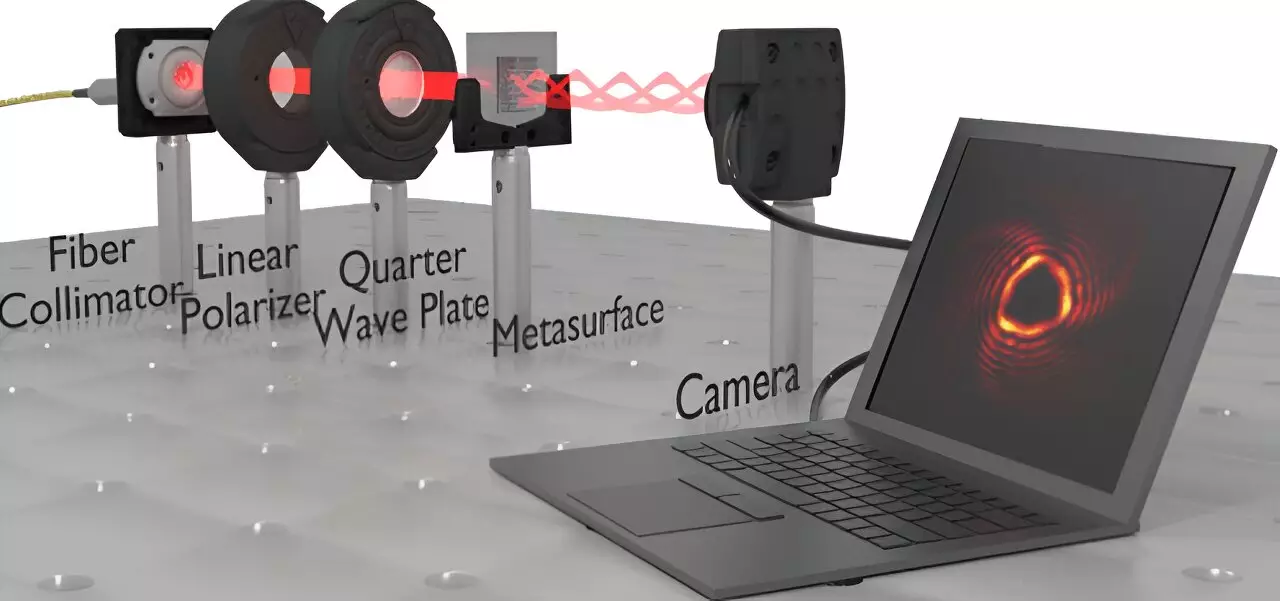In a groundbreaking study, researchers at the ARC Center of Excellence for Transformative Meta-Optical Systems (TMOS) at the University of Melbourne have unveiled a new frontier in optical physics: the creation of metasurface-enabled tractor beams. These beams—previously the realm of science fiction—have the ability to manipulate particles using rays of light. The research, published in ACS Photonics, marks a significant step toward practical applications that could revolutionize fields ranging from medicine to engineering.
Metasurfaces, ultra-thin layers composed of nanopatterned silicon, serve as the backbone of this technology. Unlike cumbersome special light modulators (SLMs), which have historically been required to generate similar beams, these metasurfaces are incredibly compact, measuring only about 1/2000th of a millimeter thick. This downsizing not only enhances portability but also paves the way for innovative integration into handheld devices. Imagine a future where medical instruments employ such technology for non-invasive procedures, enabling tasks that currently require heavier, more disruptive methods.
From Theoretical Conception to Tangible Innovation
What sets this particular solenoid beam apart from previous iterations is its unique design and functionality. Traditional beams primarily exert a pushing force, casting particles away from the light source. In contrast, solenoid beams mimic the action of a drill, drawing particles toward them in a precise and controllable manner. This innovative approach opens up a plethora of possibilities: for instance, replacing traumatic biopsy procedures with gentle optical methods that minimize patient discomfort and risk.
The researchers have achieved this breakthrough through meticulous engineering. By mapping out a phase hologram, they designed a corresponding pattern for the metasurface which was subsequently manufactured using cutting-edge techniques like electron beam lithography and reactive ion etching. When a Gaussian input beam filters through this metasurface, a substantial portion—approximately 76%—is converted into a functioning solenoid beam. This remarkable efficiency allows for seamless interaction without interference from the unconverted light, optimizing the beam’s utility in various applications.
Implications for Future Technologies
Lead researcher Maryam Setareh articulates the potential impact of this compact and efficient device saying, “The compact size and high efficiency of this device could lead to innovative applications in the future.” Such optimism is bolstered by the major leap toward integrating complex optical systems into everyday tools. We are standing at the threshold of a new era where science fiction transitions into viable solutions—one where light does far more than simply illuminate.
As the boundaries of optical technology continue to expand, we are reminded of how pivotal these innovations can be. The ability to manipulate particles with light not only offers promise in medical diagnostics and micro-manufacturing but ignites our imagination regarding future scientific endeavors. This exploration into optical tractor beams is more than a technical achievement; it is an invitation to reimagine how we utilize light—a powerful force that has illuminated our world since time immemorial.


Leave a Reply